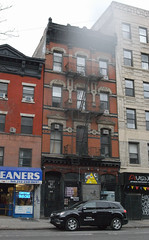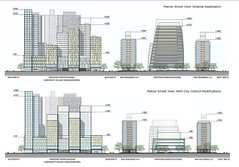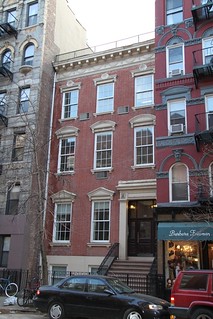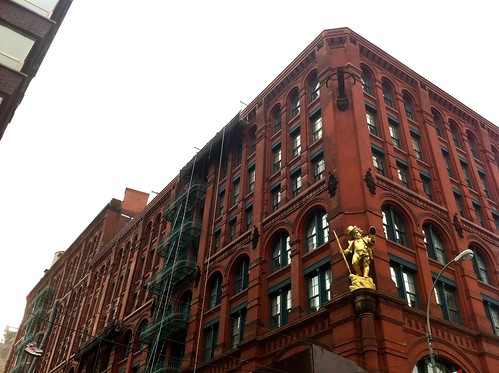On the eve of a critical hearing regarding the proposed East Village-Lower East Side Historic District, the executive director of the Greenwich Village Society for Historic Preservation, Andrew Berman, shared information on 12 of the more compelling buildings within the footprint. Here’s a look at the first six.
 G.V.S.H.P. 101 Avenue A
G.V.S.H.P. 101 Avenue A101 Avenue A, now the The Pyramid Club. Built in 1876 by architect William Jose.
Although little is known about William Jose, a German-born tenement-house architect, his buildings are often some of the most unusual and intricate in their neighborhoods. His Neo-Grec design for 101 Avenue A is no different, with an unusually ornate cornice, florid fire escapes, and deeply incised window hoods.
The building housed several tenement apartments on its upper floors, while its ground floor long served as a hall where locals would gather to eat, celebrate, mourn, or discuss labor issues and neighborhood gossip. Kern’s Hall was the first to open in 1876 and was followed by Shultz’s Hall, Fritz’s Hall, and most famously, Leppig’s Hall.
John Leppig and later his son, also named John Leppig, both served as the unofficial “Mayor of Avenue A.” Leppig’s closed in the 1930s, and by the 1960s the space was home to a series of performance spaces and cultural centers, which reflected the East Village’s evolution from an ethnic enclave to a worldwide center of cultural ferment. It was also at this time that underground music icon and Warhol superstar Nico lived upstairs at 101 Avenue A, while she was performing with the Velvet Underground.
In 1979 the present occupant, the Pyramid Club, opened in the space. The Pyramid Club had a profound impact on the downtown art, music, and performance art scene. The Wigstock Festival is said to have begun there, as well as politically-conscious drag performance in the early 1980s. In later years it became a showcase for up-and-coming artists, including Madonna, RuPaul, Nirvana, and the Red Hot Chili Peppers. Read more…
 Courtesy of N.Y.U. A rendering of N.Y.U.’s plans for two blocks south of Washington Square Park that features the newly reduced buildings.
Courtesy of N.Y.U. A rendering of N.Y.U.’s plans for two blocks south of Washington Square Park that features the newly reduced buildings.







